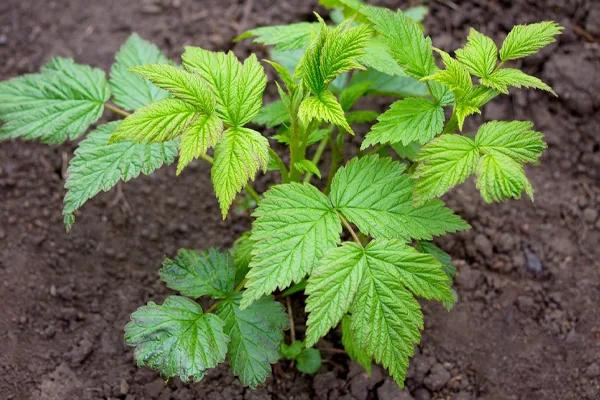Table of Contents
Intro to Raspberry Growing
These point apply to almost all our raspberry plants:
- They fruit very heavily.
- Their fruit has an extremely high water content.
- They completely replace their fruiting wood every year.
- They are very shallow rooted (so don’t trample the surrounding ground).
- They often send up root sucker shoots some distance away from the main plant. Dig down, tear them away from the root, and give them to a friend.
- A good raspberry bed can have a life of over 20 years.
- Raspberries are best grown up a single post, or on parallel support wires about 2.5 feet / 75cms apart; there are some exceptions with quite short, sturdy stems, and dwarf varieties like Yummy are too small to need any support.

Raspberries are either
- “Autumn fruiting” primocanes (cropping on new wood that grew this year), or
- “Summer fruiting” floricanes (cropping on old wood that grew last year)
- The names “Autumn fruiting” and “Summer fruiting” can be slightly misleading, as the earliest primocanes crop in late summer, and the latest floricanes crop well into Autumn
Bareroot Raspberry Planting
A raspberry bed needs thorough preparation.
- Being so shallow rooted, they cannot tolerate competition from grass and other weeds, which must be thoroughly removed.
- Because they bear large, juicy crops and have to renew their fruiting wood annually, the soil needs to be rich and water retentive. Incorporate masses of well-rotted manure and garden compost (except on heavy clay, see below).
- Leave plenty of room between rows: their roots grow very close to the surface, so walking close to the plants when weeding or harvesting is a big no-no.
How to plant bareroot raspberry canes
- Do not plant too deep! This is the cause of most newly planted raspberry deaths. Cover the roots with soil, keep them well watered, and they will sort themselves out.
- Plant your raspberry plants 60 – 75cm apart.
- Ideally, apply Rootgrow directly to the roots: only add blood & bone meal into the hole if you are not using Rootgrow.
- Mulch around (not over) your raspberries, ideally with well-rotted manure or compost, and top it up every spring to keep the soil fertile and to improve its structure.

Heavy clay is already fertile and water retentive, and can turn really soggy if you try to improve a relatively small area with organic matter, so clear the ground of weeds, but do not improve it before planting with organic matter.
If you have the energy, it is fine to dig in grit, pea gravel, and some sharp sand (not smooth builder’s sand), but this is usually not essential, unless you are trying to raise the level of the bed a few inches. Simply make a hole for each cane, pop it in, and replace the clay gently around the raspberry roots. Going forward, mulch as normal, and let the worms gradually mix everything together as nature intended.
Raspberry Pruning
Instead of burning the old canes, bundle them up and stuff them in a hedge for insects and bugs to use for hibernation: ladybird heaven.
Pruning Summer Fruiting Raspberries
Summer fruiting raspberry canes, floricanes, fruit on one-year-old stems, as opposed to Autumn fruiting varieties (primocanes) that fruit on new growth (see below).
- Each cane only fruits once, so cut them down to ground level after harvesting.
- Once you have removed the old canes, examine the remaining stems that began to grow that year, which will bear fruit next year.
- Select between four and eight of the biggest, strongest canes per plant and prune out all the others. This encourages the plant to put most of its energy into making fruit.
- During winter, there will probably be new shoots that are longer than the support wires: either trim the ends off, or tie them down; either way will encourage more fruit.
Pruning Autumn Fruiting Raspberries
Autumn fruiting raspberries, primocanes, fruit on the tips of stems that grew up from the ground in the same year, as opposed to summer fruiting varieties (floricanes) that fruit on year old growth (see above).
They could hardly be easier to prune:
- Do nothing in the year of planting.
- Each year after that, cut all the stems down to ground level during winter, anytime before February. It is better to leave pruning until winter to give the harvested stems time to send their nutrients down to the roots for next year.
- New growth will emerge from the base of the plant in spring and will fruit in autumn. Easy.
Autumn Bliss and Joan J are the two most popular Autumn Raspberries that we grow.
Difference in when to cut back Autumn Vs Summer fruiting varieties
- Autumn Fruiting: Because all the canes are cut to the ground at the same time, it’s best to do this in Winter when all nutrients have returned to the roots
- Summer Fruiting: Because there are new canes coming up at the same time as the old canes are fruiting, it’s best to cut out old canes as soon as they have cropped in order to make space.
Fertilising Raspberries
After pruning, feed with a high potash (which is Potassium, the K part of the NPK ratio that you see on fertiliser packets) fertiliser around the plants, preferably an organic one because it releases its nutrients more slowly.
Raspberry canes “run at the root” and make suckers
In the early years of growing raspberries, their habit of making new plants via root suckers is great for filling your garden with more raspberries.
But when they’ve established it becomes a little chore to remove them, usually by hoeing them out.
